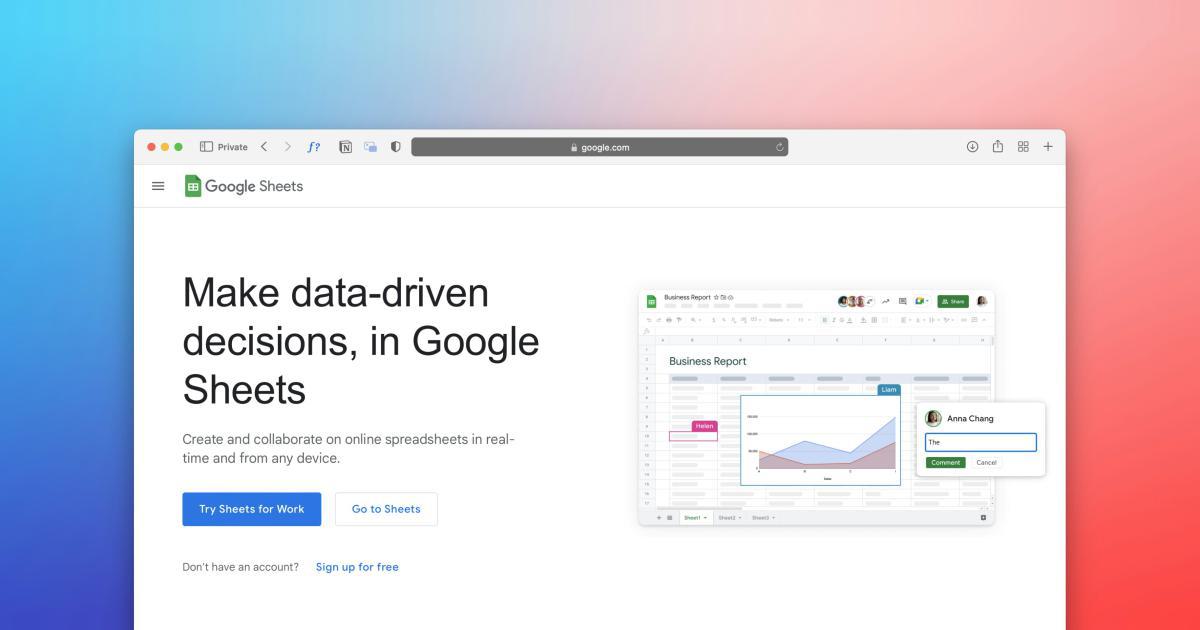Mastering the Art of Revenue-Focused Objectives


The Importance of Revenue-Focused Objectives
In today's fast-paced and highly competitive business environment, the ability to set and achieve revenue-focused objectives is paramount to the success of any organization. Revenue-focused objectives are strategic goals that are specifically designed to drive revenue growth, improve profitability, and ultimately, enhance the overall financial performance of a company.
By aligning your organizational objectives with revenue generation, you can create a clear roadmap for success, prioritize your resources, and measure the impact of your efforts more effectively. This strategic approach not only helps you achieve your financial targets but also enables you to make informed decisions, identify new opportunities, and stay ahead of the competition.
Understanding the Fundamentals of Revenue-Focused Objectives
To master the art of revenue-focused objectives, it's essential to start with a solid understanding of the underlying principles and best practices. Let's dive into the key elements that make up effective revenue-focused objectives:
Specific and Measurable
Successful revenue-focused objectives are specific and measurable, ensuring that you can track progress and evaluate the success of your efforts. This means setting clear, quantifiable targets, such as "Increase annual revenue by 20%" or "Achieve a 10% year-over-year growth in recurring revenue."

Time-Bound
Revenue-focused objectives should have a defined timeline, whether it's quarterly, annual, or multi-year. This helps create a sense of urgency, drives accountability, and allows you to monitor your progress and make adjustments as needed.
Aligned with Business Strategy
Your revenue-focused objectives should be tightly aligned with your overall business strategy and vision. This ensures that your efforts are focused on the right priorities and contribute to the long-term success of your organization.

Challenging but Achievable
The most effective revenue-focused objectives strike a balance between being challenging and achievable. They should push your organization to stretch its capabilities and reach new heights, but not be so ambitious that they become unrealistic or demotivating.
Communicated Effectively
Successful revenue-focused objectives are communicated clearly and consistently throughout the organization. This helps ensure that everyone understands the goals, their role in achieving them, and the impact their efforts can have on the overall financial performance of the company.

Developing Revenue-Focused Objectives: A Step-by-Step Approach
Now that we've covered the fundamentals, let's explore a step-by-step approach to developing and implementing effective revenue-focused objectives:
1. Analyze Your Current Financial Performance
Start by conducting a thorough analysis of your current financial performance, including revenue, profitability, and growth trends. This will help you identify your strengths, weaknesses, and areas of opportunity that you can leverage to set meaningful revenue-focused objectives.

2. Align with Your Business Strategy
Ensure that your revenue-focused objectives are closely aligned with your overall business strategy and vision. This will help ensure that your efforts are focused on the right priorities and contribute to the long-term success of your organization.
3. Identify Key Revenue Drivers
Determine the key factors that drive revenue in your business, such as customer acquisition, retention, average order value, or new product launches. Understanding these drivers will help you create more targeted and effective revenue-focused objectives.

4. Set Specific, Measurable Objectives
Based on your analysis and understanding of your revenue drivers, set specific, measurable revenue-focused objectives. These should be quantifiable, time-bound, and challenging yet achievable.
5. Develop a Comprehensive Action Plan
Create a detailed action plan that outlines the specific actions, resources, and timelines required to achieve your revenue-focused objectives. This plan should include key milestones, metrics, and accountability measures to ensure progress and success.

6. Communicate and Engage Your Team
Effectively communicate your revenue-focused objectives and action plan to your team, ensuring that everyone understands their role and the impact their efforts can have on the organization's financial performance. Engage your team and foster a culture of collaboration and shared accountability.
7. Monitor and Adapt
Regularly monitor your progress towards your revenue-focused objectives, and be prepared to adapt your strategies and tactics as needed. This may involve adjusting your objectives, reallocating resources, or exploring new revenue-generating opportunities.

Overcoming Common Challenges
While the process of developing and implementing revenue-focused objectives may seem straightforward, there are several common challenges that organizations may face. Let's explore some of these challenges and discuss strategies to overcome them:
Aligning Cross-Functional Teams
Achieving revenue-focused objectives often requires the coordination and collaboration of multiple teams and departments, such as sales, marketing, product, and finance. Ensuring that everyone is aligned and working towards the same goals can be a significant challenge.

To overcome this challenge, focus on fostering a culture of communication and transparency, establishing clear roles and responsibilities, and creating incentive structures that encourage cross-functional collaboration.
Balancing Short-Term and Long-Term Objectives
Organizations often struggle to find the right balance between short-term revenue-focused objectives and long-term strategic goals. This can lead to a myopic focus on quick wins at the expense of sustainable growth.

To address this challenge, adopt a more holistic approach that considers both short-term and long-term revenue-focused objectives. Ensure that your short-term goals support and complement your long-term strategic vision.
Adapting to Changing Market Conditions
The business landscape is constantly evolving, and organizations need to be agile in adapting their revenue-focused objectives to changing market conditions, customer preferences, and competitive dynamics.

Foster a culture of continuous learning and improvement, regularly review your objectives and action plans, and be prepared to pivot your strategies as needed to stay ahead of the curve.
Measuring and Tracking Progress
Effectively measuring and tracking progress towards your revenue-focused objectives can be a complex and challenging task, especially in organizations with multiple revenue streams or complex sales cycles.

Invest in robust analytics and reporting tools, establish clear metrics and KPIs, and regularly review your data to gain insights and make informed decisions.
Leveraging Data and Analytics
Data and analytics play a crucial role in the development and execution of effective revenue-focused objectives. By leveraging data-driven insights, organizations can make more informed decisions, optimize their strategies, and measure the impact of their efforts more accurately.

Some key ways to leverage data and analytics in the context of revenue-focused objectives include:
- Analyzing historical sales and financial data to identify trends, patterns, and opportunities
- Conducting customer segmentation and behavior analysis to better understand your target market
- Monitoring and optimizing marketing and sales campaigns to improve lead generation and conversion rates
- Tracking and analyzing the performance of your products or services to identify areas for improvement
- Forecasting future revenue and growth potential based on current data and market conditions
By incorporating data and analytics into your revenue-focused objectives, you can make more informed, data-driven decisions, allocate your resources more effectively, and ultimately, achieve better financial outcomes for your organization.
Real-World Examples and Case Studies
To better illustrate the practical application of revenue-focused objectives, let's explore a few real-world examples and case studies:
Example 1: Subscription-Based SaaS Company
A SaaS company specializing in project management software sets a revenue-focused objective to "Increase annual recurring revenue (ARR) by 25% within the next 12 months." To achieve this, the company focuses on improving customer retention, expanding its user base, and introducing new product features that cater to its target market.

The company analyzes its current customer churn rates, identifies the key drivers of customer satisfaction, and implements targeted retention strategies. It also invests in a comprehensive digital marketing campaign to attract new customers and drive signups. Additionally, the product team works on developing new functionalities that enhance the user experience and provide additional value to customers.
By the end of the 12-month period, the company successfully achieves its 25% ARR growth objective, thanks to its data-driven approach and cross-functional collaboration.
Example 2: Brick-and-Mortar Retail Business
A local clothing retailer sets a revenue-focused objective to "Increase in-store sales by 15% year-over-year." To accomplish this, the retailer focuses on improving the in-store shopping experience, optimizing its product mix, and leveraging data-driven promotional strategies.

The retailer conducts customer surveys and observes shopper behavior to identify areas for improvement in the in-store experience, such as product presentation, layout, and customer service. The merchandising team then adjusts the product mix to better cater to the preferences of the store's target demographic.
Additionally, the marketing team analyzes historical sales data and customer segmentation to develop targeted promotional campaigns, including personalized offers, loyalty programs, and strategic discounts. These efforts help drive increased foot traffic and higher average order values.
By the end of the year, the retailer successfully achieves its 15% in-store sales growth objective, demonstrating the effectiveness of its customer-centric, data-driven approach.
Example 3: Ecommerce Beauty Brand
An online beauty brand sets a revenue-focused objective to "Achieve a 30% year-over-year increase in direct-to-consumer (DTC) revenue." To accomplish this, the brand focuses on optimizing its ecommerce platform, enhancing its digital marketing strategies, and expanding its product offerings.

The brand's technology team works on improving the user experience of its ecommerce website, streamlining the checkout process, and implementing personalized product recommendations. The marketing team, on the other hand, develops a comprehensive digital marketing strategy that includes search engine optimization, targeted social media campaigns, and influencer collaborations.
Furthermore, the brand's product development team leverages customer feedback and data insights to identify new product opportunities that align with the evolving needs and preferences of its target audience. This expansion of the product portfolio helps drive increased average order values and repeat purchases.
By the end of the year, the brand successfully achieves its 30% DTC revenue growth objective, demonstrating the power of a holistic, data-driven approach to revenue-focused objectives.
Conclusion
Mastering the art of revenue-focused objectives is crucial for organizations that aim to drive sustainable growth, improve financial performance, and stay ahead of the competition. By following a comprehensive, data-driven approach, you can develop and implement effective revenue-focused objectives that align with your overall business strategy and enable you to achieve your desired financial outcomes.
Remember, the key to success lies in setting specific, measurable, and time-bound objectives, fostering cross-functional collaboration, leveraging data and analytics, and continuously adapting to changing market conditions. With a clear focus on revenue-driven goals and a commitment to execution, your organization can unlock new levels of financial success and position itself for long-term prosperity.